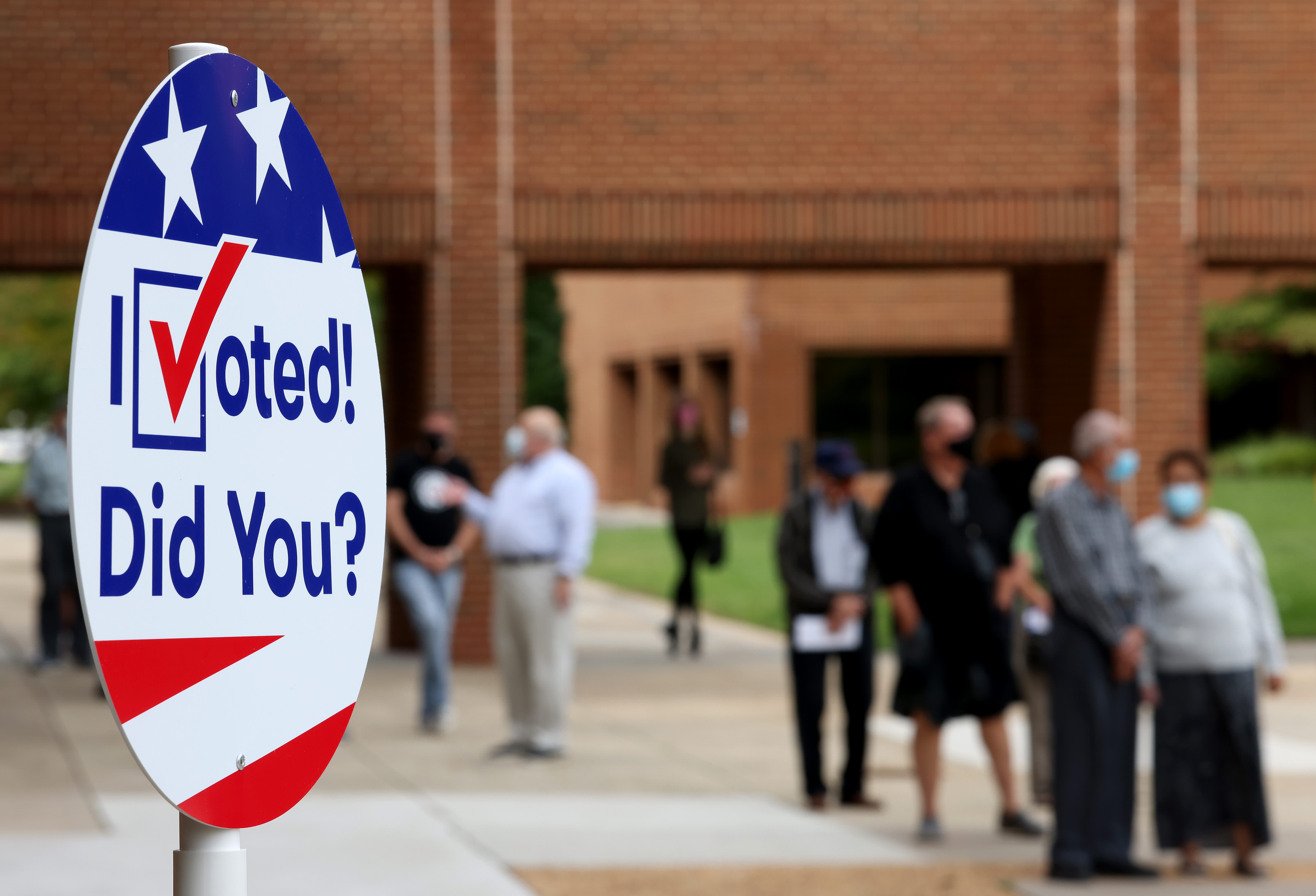
More than 66.9 million Americans have voted in the 2020 presidential election with one week to go until Election Day, according to U.S. Elections Project data released Tuesday morning.
A record number of voters have already cast their ballots in the race between Republican President Donald Trump and Democratic challenger Joe Biden as the coronavirus pandemic has created an unprecedented demand for mail-in and in-person early voting.
Early voting in 2020 has now surpassed the 58 million mail-in or in-person early votes cast in 2016, based on The Associated Press totals, and reached 48.6% of the more than 136 million total ballots cast in the 2016 presidential election.
That’s good news, according to U.S. Elections Project director and University of Florida professor Michael McDonald.
“There were many concerns about election officials’ ability to conduct an election during a pandemic. Not only are people voting, but they are voting over a longer period of time, thereby spreading out the workload of election officials,” McDonald wrote on the project’s website.
Democrats still lead Republicans in mail voting for states that report party data, but GOP voters have surpassed Democrats in ballots cast in person. Of the more than 23.9 million returned mail ballots tracked by the U.S. Elections Project, registered Democrats have sent in 52.1%, compared with 24.7% from Republicans. Of over 7.3 million in-person votes with party affiliation reported, Republicans lead with 41.6% over Democrats’ 37.0%.
Republicans are hoping strong turnout in-person can make up Democrats’ mail voting advantage.
“There is still some play left in the in-person early vote, but time is starting to run short such that Republicans will need to rely heavily on Election Day vote, which has traditionally been a strong day of voting for Republicans in recent elections,” McDonald wrote.
As deadlines for absentee ballots draw near, over 28.9 million requested mail ballots have not been returned, including over 11.2 million from registered Democrats, the project reports.
Texas continues to lead all early voting with a whopping 7.8 million votes as of Tuesday morning — 86.9% of the state’s total turnout in 2016. Since the last presidential election, Texas has gained about 1.9 million more registered voters, according to The Texas Tribune.
The state does not report party affiliation at this stage, but polls are suggesting the Republican stronghold may be a battleground in 2020. Real Clear Politics’ polling average gives Trump a lead of 3.2 percentage points over Biden. In 2016, Trump won Texas over Democratic nominee Hillary Clinton by 9 points.
Crucial battleground state Florida has also seen high levels of voting. Over 6.4 million residents have cast a ballot in the Sunshine State, which began in-person early voting last Monday. Republicans lead in-person votes with 46.4% to Democrats’ 34.0%, while Democrats lead mail ballots with 46.8% to Republicans’ 31.0%. The president himself voted in West Palm Beach on Saturday.
In North Carolina, voters are casting far more ballots in person than by mail. The state uses a “one-stop” early voting model that allows eligible North Carolinians to register and vote at the same time. Over 2.6 million residents have voted in person while 804,812 have voted by mail, according to data from state election officials. Democrats lead Republicans in both in-person and mail-in voting in the state.
With Election Day approaching, young voters will be another group to watch at the ballot box. Data suggests young people will turnout in record numbers this year and could potentially swing toss-up races in favor of Democrats.
A national poll of Americans ages 18 to 29 released Monday by the Institute of Politics at Harvard Kennedy School found Democratic nominee Joe Biden leads Republican President Donald Trump 63% to 25% among young voters most likely to vote.
As of last Wednesday, more than 3 million voters ages 18 to 29 have already cast their ballot in the 2020 elections, according to data from Tufts University. The number of young voters has far outpaced that of 2016, but experts say young people are more likely to vote in person and later in the election season.
“We’re probably not seeing the greatest impacts of youth vote yet. I think you’ll still see that on the Election Day,” said Kei Kawashima-Ginsberg, director of the Center for Information and Research on Civic Learning and Engagement, or CIRCLE, at Tufts University.
Many variables remain unknown in the countdown to Nov. 3. Coronavirus surges, bad weather and long lines can all impact Election Day turnout.




